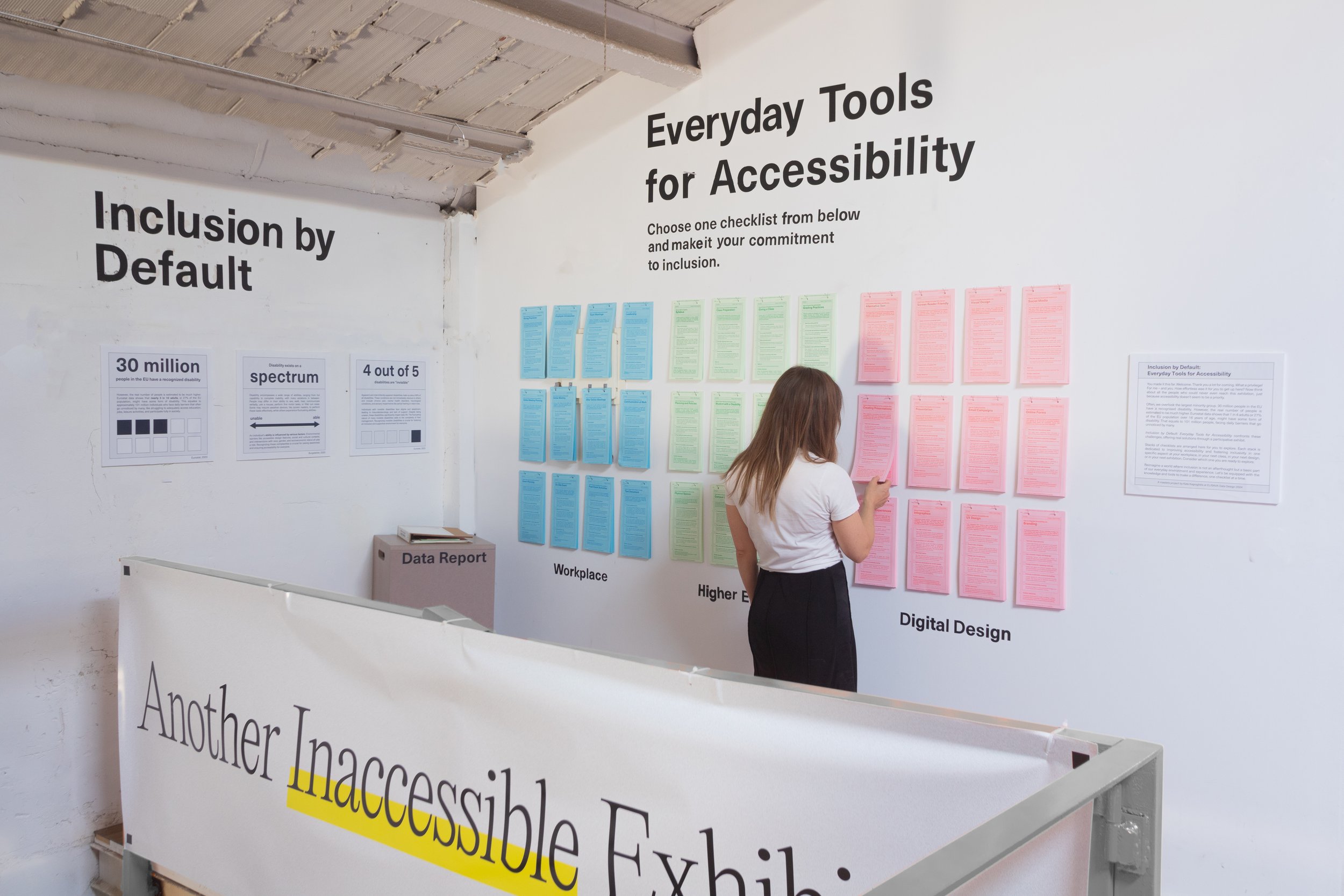Inclusion By Default:
Everyday Tools for Accessiblity
Reimagine a world where inclusion is not an afterthought but a basic part of every environment and experience. Let’s be equipped with the knowledge and tools to make a difference, one checklist at a time.

Download your Checklist Set
Below you can find all checklists as printable PDFs or screen-reader friendly Google Docs. Make your world more accessible and inclusive, one checklist at a time.
Workplace
Digital Design
Higher Education
"Often, we overlook the largest minority group. Eurostat shows that more than 1 in 5 people in the EU, or 27%, live with some form of disability, facing daily barriers that go unnoticed by many." — Eurostat 2023
The Concept
Checklists for more inclusivity in everyday areas like the workplace, digital design, higher education, or exhibition design. Each checklist is dedicated to improving accessibility and fostering inclusivity in a specific aspect.

Understanding Disability
Disability exists on a spectrum
Disability encompasses a wide range of abilities, from full capability to complete inability, with many variations in between. People may differ in their ability to see, walk, hear, communicate verbally, use a mouse, perform fine motor tasks, digest food or filter out noise. Some may require assistive devices, like screen readers, to perform these tasks effectively, while others experience fluctuating abilities.
An individual's ability is influenced by various factors, including environmental barriers, social and cultural contexts, and intersections with race, gender, and socioeconomic status.
Recognizing these complexities is crucial for raising awareness and ensuring accessibility for everyone.
Some More Facts
30 million people in the EU have a recognized disability
However, the actual number of people with disabilities is estimated to be much higher. Eurostat data shows that nearly 3 in 10 adults, or 27% of the EU population, might have some form of disability. This equates to approximately 101 million individuals who face daily barriers that often go unnoticed, like struggling to adequately access education, jobs, leisure activities, and participate fully in society.
4 out of 5 disabilities are “invisible”
Apparent and intermittently apparent disabilities make up about 80% of all disabilities. These conditions are not immediately obvious to others and include chronic pain, mental health disorders, neurological conditions, and sensory impairments like partial hearing or vision loss. Individuals with invisible disabilities face stigma and skepticism, leading to misunderstandings and lack of support. Despite being unseen, these disabilities significantly impact daily life. The fluctuating nature of many invisible disabilities adds to the complexity of their management. Recognizing invisible disabilities is crucial for fostering an inclusive and supportive environment for everyone.
Share and Improve
Creative Commons License
All our checklists are shared under a Creative Commons license. We encourage you to use, adapt, and improve these documents. Your feedback is invaluable, so please share your experiences and suggestions for new checklists or areas that need attention.
Let's collaborate to create a more inclusive world.




